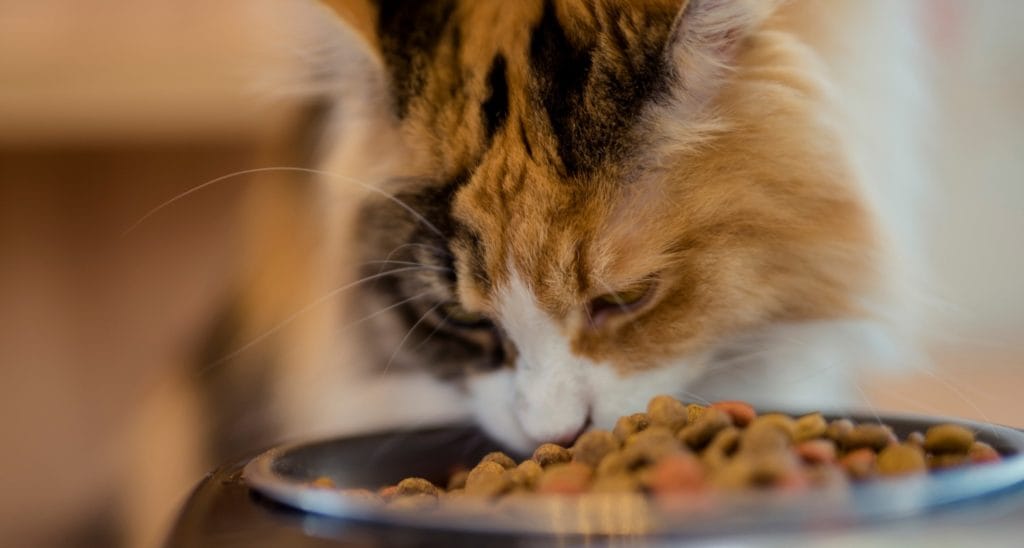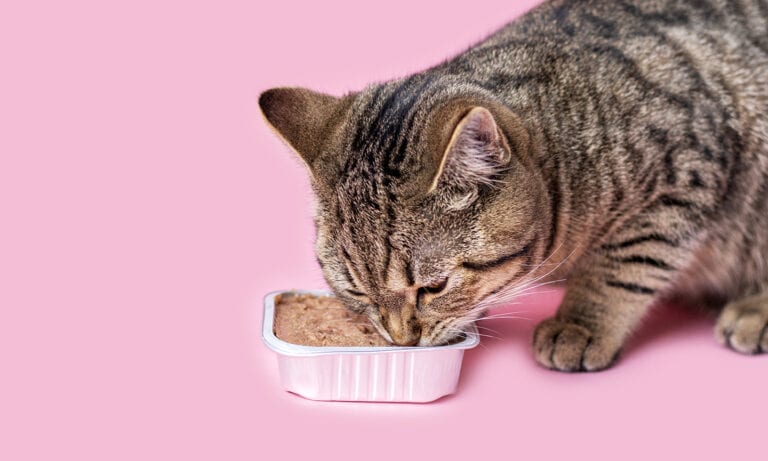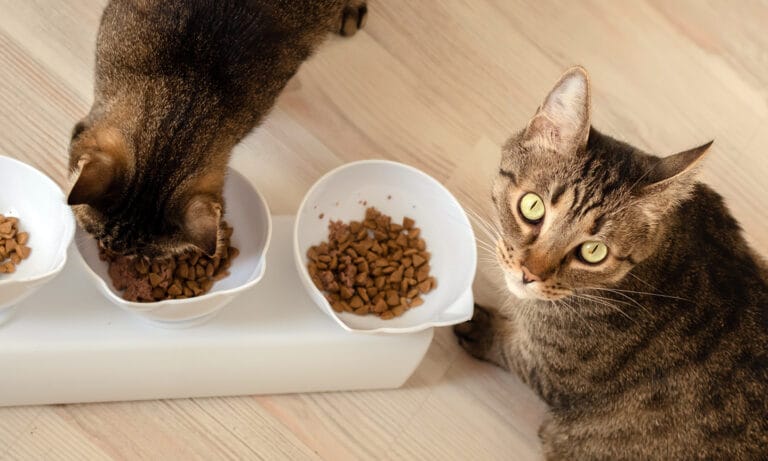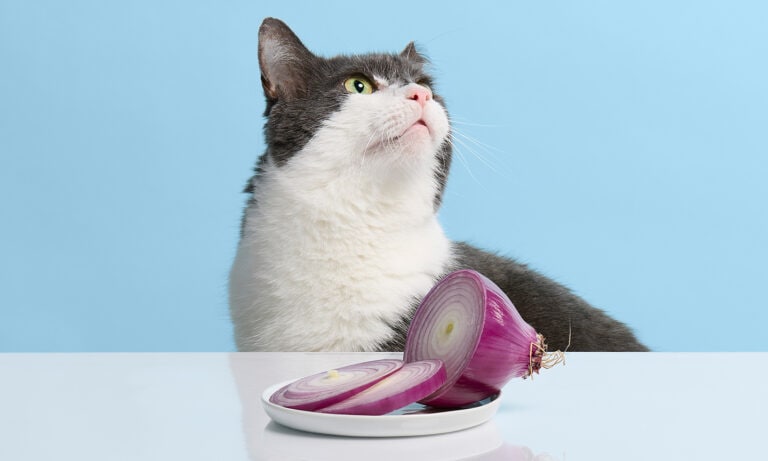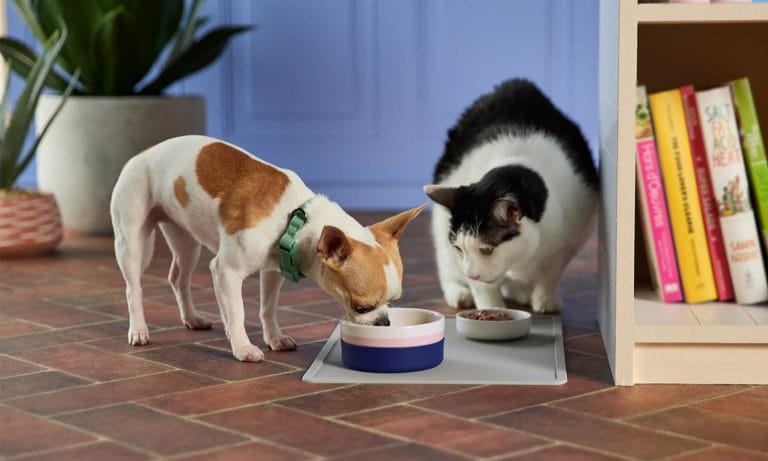Feeding your adolescent cat can be a challenge. Cats in this age group (age 7 months to 2 years) are still growing, so they need enough calories to help them thrive. However, this also is an age when cats get spayed or neutered, which lowers their calorie requirements.
So, you want your feline friend to have optimum growth, but you don’t want to start the seed of obesity. Definitely a tricky position to be in! But if you recognize how these changes affect your young cat’s dietary needs, you should be able to provide him with the proper nutrition to keep him happy and healthy.
Your Young Cat’s Energy Needs
Just because a cat is out of kitten stage doesn’t mean he has stopped growing. At 6 months old your cat will be about 6 pounds. Many will continue to grow up until the age of 18 months old, at which point they should be at their adult weight — generally 8 to 10 pounds. During this growth period, the National Research Council recommends you go from feeding your cat about 200 Kilocalories (kcal) per day to 250-280 kcal per day. A large breed cat such as a Ragdoll or Maine Coon cat may have a lean weight of 15 pounds and need about 360 kcal per day.
It’s important to note that a spayed or neutered cat will require fewer calories, and this is around the age when most cats will have the surgery.
After neutering, a male cat has a 28 percent decrease in daily calories, while a spayed female cat has a 33 percent drop in her dietary needs. That drop goes into effect within weeks of the surgery. At the same time, hormonal drops can stimulate an increase in the drive to eat—not hunger, but simply a desire to eat more.
What To Feed Your Young Cat
Feline diets should always be heavy on the protein content side. Thirty percent protein is certainly appropriate for your adolescent feline. Meat is the best source of protein for cats, as they are obligate carnivores. Be careful not to overdo organ meats, however. Too much liver could lead to vitamin A toxicity with various skeletal deformities.
Your best bet is to choose one of the balanced feline diets that are labeled for growth for your young cat up to about a year of age—for example, Blue Buffalo’s Healthy Growth kitten food, which contains taurine and DHA omegas to boost healthy growth and development. Then he can switch to a diet that is approved as balanced for all cat life stages, like Dr. Tim’s Chase cat food.
By now, your cat may have some distinct preferences for flavors and types of food. Dry cat food, as long as there is plenty of fresh, clean water available, will work, or you can use canned food.
If you prefer to use a homemade diet or try raw feeding, you need to consult a veterinary or animal nutritionist. You can’t simply hand your young cat a raw chicken leg twice a day!
When To Feed Your Young Cat
Cats do best with multiple meals a day. Two or three meals a day is fine. By feeding meals instead of free-freeding (leaving food out all day), you can measure out exactly how much your cat is eating. You will also be alerted immediately if he skips a meal.
Use your cat’s food label to calculate how much you need to feed to meet his caloric requirement. Most foods have calorie counts on the packaging. Initially, it is best if you weigh out the daily meals. That will help you feed precise amounts. You can then put the weighed food into a container so you know to simply scoop out 1/8 or 1/4 cup as needed.
If your adolescent cat is one of those wild teenagers who is always on the go, he may beg for a snack in between. Keep these snacks small, and monitor his body condition weekly. You don’t want him to join the ranks of pudgy cats. Instead of feeding cat treats, you can set aside a portion of his daily diet to use as rewards and for training.
Yes, I did say training. Cats can learn and perform tricks just like dogs. There are even agility competitions for cats! Adolescence is the ideal time to start your cat on his performance career.
A cat who is wild in the evening when you get home from work or who runs around after lights out may need more exercise. One easy way to increase exercise is to use a food puzzle or a food game to feed him his meals. These are commercial products that require your cat to work to earn his kibble. They would work with dry food or freeze dried chunks of food.
Other Factors To Consider
It is important to monitor your cat to make sure he isn’t having trouble maintaining weight at this time of his life. A very active young cat, especially if he goes outdoors, may simply need more calories per day. A mouse is reputed to have 30 to 35 kcal, and most outdoor cats are said to eat eight to 10 mice a day. They expend numerous calories catching those mice first though.
A cat who spends time outdoors may also contract tapeworms either from fleas or from the mice he eats. Tapeworms will drain nutrients from your cat. Owners identify tapeworms by seeing the segments (about the size of rice) on a fresh stool in the litterbox or noting dried ricelike segments around the tail area. Your veterinarian will prescribe medication to treat the tapeworm infestation, but if your cat acquires more fleas or continues to hunt, he will re-infest himself.
Young cats may still have some internal parasites leftover from kittenhood as well. It is always a good idea to have a fecal check done on a young cat who has trouble keeping his weight up.
Adolescence is a wonderful time in your cat’s life. He will be energetic, fun and highly amusing. He will explore and race about but also come to cuddle with you at quiet times. Feed to his energy requirements and keep him in tip-top shape as he grows into his adult size.
Read more:
- Do You Know How Much to Feed a Kitten? The Ultimate Guide to Kitten Food Portions
- Do You Know How Much to Feed a Cat? The Definitive Guide to Cat Food Portions
- Kitten Stages: What to Expect at Each Developmental Milestone
Want to give your pet superior health and nutrition? Chewy offers a variety of premium cat food so you can feed your feline the highest quality ingredients. Shop Chewy’s selection of premium cat food here.
Share:
